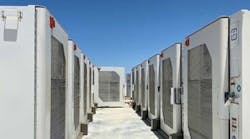San Diego Gas & Electric adding four Battery Storage Microgrids to provide Mission Critical power during Outages
San Diego Gas & Electric has quickened its pace in adopting energy storage to create forms of microgrids along its system.
The utility, which already has completed or is in works on numerous solar-storage and microgrid combinations, now plans to add 39 MW/180 MWh in battery storage capacity of four of the company’s substations. These additions will be able to operate independently or parallel to the regional grid and keep mission critical community facilities powered even during outages.
SDG&E gained approval for the projects from the California Public Utilities Commission.
“These clean energy projects will help our region become more resilient to the impacts of our worsening climate,” said SDG&E Vice President of Energy Innovation Miguel Romero. “They will dispatch clean energy to the grid when needed and keep critical facilities like schools, Cool Zones, and fire stations powered during emergencies.”
Below are brief descriptions of each of the projects.
· The Clairemont substation microgrid will have the ability to power the Balboa Branch Library/Cool Zone, Fire Station 36, and local schools such as Lafayette Elementary and Sequoia Elementary Schools, Innovation and CPMA Middle Schools, and Madison High School
· The Boulevard substation microgrid will have the ability to power the San Diego County Sheriff’s Department, Fire Station 47, Campo Reservation Fire Station, Cal Fire White Star Station, Campo Tribal Office, Campo Kumeyaay Nation Medical Center, Southern Indian Health Council Campo Clinic, the Boulevard Border Patrol Station, and the Boulevard Post Office
· The Paradise substation microgrid will have the ability to power Fire Stations 51 and 32, the Southeast Division Police Department, and Bell Middle School, as well as Freese, Boone and Fulton Elementary
· The Elliott substation microgrid will have the ability to power Fire Station 39, the Tierrasanta Public Library/Cool Zone, Tierrasanta Medical Center, Jean Farb Middle School, Canyon Hills High School, and Tierrasanta and Kumeyaay Elementary Schools.
California’s warmer climate and frequent wildfire outages has pushed for inclusions of more distributed energy and microgrid assets to keep critical functions going during public safety power
The four new projects are slated to be completed in summer 2023.
Battery storage works by capturing renewable resources like wind and solar when they are abundant during the day, then sending that energy back to the grid when it is needed. As with other SDG&E owned storage projects, these facilities will be connected to the state energy market so that the California Independent System Operator (CAISO) can dispatch these resources as needed to balance energy supply and demand throughout the state.
SDG&E has embarked and several other microgrid and storage projects. Last year, It completed the Top Gun Energy Storage facility, a 30-MW/120-MWh battery array in the Miramar area.
The utility later added a 20-MW/80-MWh facility in Kearny Mesa. In addition, SDG&E plans additional microgrids in the High Threat Fire District to support state and federal firefighters and mission critical facilities.
About the Author
Rod Walton, EnergyTech Managing Editor
Managing Editor
For EnergyTech editorial inquiries, please contact Managing Editor Rod Walton at [email protected].
Rod Walton has spent 17 years covering the energy industry as a newspaper and trade journalist. He formerly was energy writer and business editor at the Tulsa World. Later, he spent six years covering the electricity power sector for Pennwell and Clarion Events. He joined Endeavor and EnergyTech in November 2021.
Walton earned his Bachelors degree in journalism from the University of Oklahoma. His career stops include the Moore American, Bartlesville Examiner-Enterprise, Wagoner Tribune and Tulsa World.
EnergyTech is focused on the mission critical and large-scale energy users and their sustainability and resiliency goals. These include the commercial and industrial sectors, as well as the military, universities, data centers and microgrids. The C&I sectors together account for close to 30 percent of greenhouse gas emissions in the U.S.
He was named Managing Editor for Microgrid Knowledge and EnergyTech starting July 1, 2023
Many large-scale energy users such as Fortune 500 companies, and mission-critical users such as military bases, universities, healthcare facilities, public safety and data centers, shifting their energy priorities to reach net-zero carbon goals within the coming decades. These include plans for renewable energy power purchase agreements, but also on-site resiliency projects such as microgrids, combined heat and power, rooftop solar, energy storage, digitalization and building efficiency upgrades.

